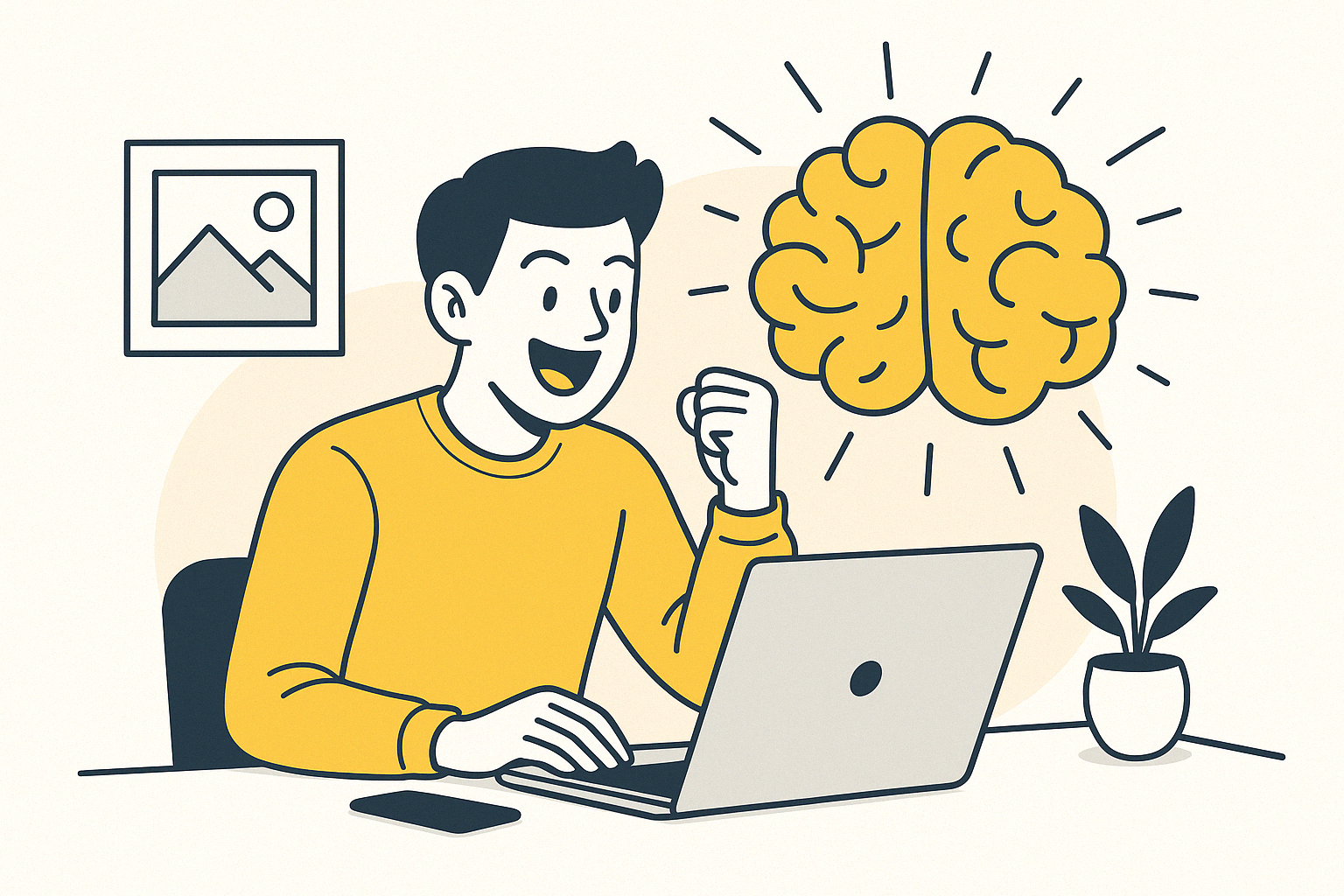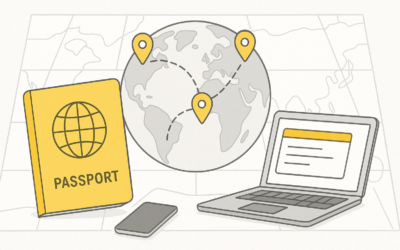How do remote workers and digital nomads stay organized across time zones while battling information overload? The “Second Brain” trend—a digital system for capturing ideas and managing knowledge—has become important for modern professionals seeking structure in fluid lifestyles. In this article, we explore tools like Notion and Obsidian that transform scattered workflows into centralized productivity hubs, helping teams collaborate asynchronously and unlock creative potential without mental clutter.
Table of contents
- Notion: The All-in-One Workspace
- Obsidian: Connected Thinking Redefined
- Tana: Next-Gen Knowledge Graphs
- Evernote: The Original Capture Tool
- Logseq: Open-Source Flexibility
- Capacities: Content-Creation Focused
- Information Overload Management
- Team Collaboration at Scale
- Remote Work Productivity Boost
- Automating Repetitive Tasks
- Structured Flexibility for Nomads
- Comparatif
Notion: The All-in-One Workspace
Notion redefines workspace management by combining notes, tasks, and CRM capabilities into a single platform. Its customizable dashboards and AI integration allow teams to centralize workflows, making it a cornerstone for remote-first culture alignment. Real-time collaboration features eliminate version chaos, while templated systems adapt to marketing sprints, client onboarding, or product roadmaps with equal ease.
For distributed teams, Notion’s asynchronous capabilities shine across time zones. Shared databases become living repositories for project updates, reducing meeting dependencies. Digital nomads benefit from offline access and mobile optimization, ensuring important data remains accessible whether working from a Bali co-working space or a Berlin café. Custom permissions maintain security for client-sensitive materials, balancing flexibility with control.
Obsidian: Connected Thinking Redefined
Obsidian transforms knowledge organization through Zettelkasten methodology, using bidirectional links to map relationships between concepts. This networked approach helps remote workers discover unexpected connections across research, client projects, and creative workflows, turning scattered notes into actionable insights.
Local storage and offline access make Obsidian ideal for mobile professionals. Digital nomads maintain full control of their knowledge base without cloud dependency, accessing important information during flights or in areas with unreliable internet. The app’s speed ensures seamless workflow transitions between devices and locations.
Tana: Next-Gen Knowledge Graphs
Tana elevates data organization with graph-based structures that visualize relationships between concepts. This approach enables power users to manage complex client projects and research initiatives through dynamic, non-linear connections that traditional hierarchical systems can’t replicate.
Location-independent professionals benefit from Tana’s adaptive workflows. The platform automatically surfaces relevant data based on context, whether preparing for a Berlin client pitch or adjusting strategies from a Lisbon co-working space, maintaining coherence across shifting work environments.
Evernote: The Original Capture Tool
Evernote maintains its relevance through superior web clipping and optical character recognition, enabling remote workers to curate content from diverse sources. Its search functionality cuts through clutter, instantly surfacing archived client briefs or research materials.
For location-independent professionals, Evernote’s cross-device synchronization proves invaluable. Notes update seamlessly across smartphones, tablets, and laptops, maintaining workflow continuity during airport layovers or rural co-working retreats with limited connectivity.
Logseq: Open-Source Flexibility
Logseq empowers tech-savvy users with Markdown-based knowledge graphs that prioritize data ownership. Its plain-text format ensures long-term accessibility, while open-source architecture lets teams modify workflows without vendor lock-in constraints.
Community plugins address niche remote work requirements, from language localization to specialized project templates. Digital nomads craft personalized systems that adapt to freelance contracts, research initiatives, or content calendars through modular extensions.
Capacities: Content-Creation Focused
Capacities streamlines creative workflows with AI-powered content repositories and template libraries. Creators repurpose research across blog posts, social media, and client deliverables while maintaining brand voice consistency through centralized style guides.
Solopreneurs leverage integrated personal branding tools to align content calendars with business objectives. The platform connects audience insights to creative output, helping professionals build authority in their niche while managing multiple client projects.
Information Overload Management
Effective filtering systems help remote workers separate signal from noise through strategic tagging and priority matrices. We implement dynamic categorization that evolves with projects, ensuring only high-value insights reach active workflows.
Tiago Forte’s CODE framework provides structure for nomadic professionals, transforming raw data into actionable knowledge. As detailed in this methodology, the Capture-Organize-Distill-Express cycle maintains clarity amidst changing locations and priorities.
Team Collaboration at Scale
Shared knowledge bases become mission control for distributed teams, enabling asynchronous access to SOPs and project histories. We reduce meeting dependencies through self-service documentation that updates across time zones and departments.
Version control systems maintain integrity for client deliverables, while granular permissions balance collaboration with security. Custom access levels ensure contractors view only relevant materials, protecting sensitive data in multi-vendor environments.
Remote Work Productivity Boost
Centralized systems minimize context-switching by housing project materials, communication threads, and reference docs in unified workspaces. Teams report 40% faster task completion when eliminating app-hopping between Slack, email, and cloud storage.
Mobile-optimized interfaces ensure coffee shop nomads maintain workflow momentum. Cross-device synchronization keeps notes, tasks, and client data accessible whether working from smartphones in transit or laptops in temporary workspaces.
Automating Repetitive Tasks
Template systems eliminate redundant work through reusable frameworks for client onboarding, content calendars, and project tracking. We implement standardized workflows that adapt across time zones, ensuring consistency while preserving local flexibility. Discover implementations through job openings at forward-thinking organizations.
Zapier and API integrations create bridges between Second Brain tools and existing software ecosystems. Automated data flows populate knowledge bases without manual entry. Explore how our curated list of remote-first companies leverages these connections, and master integrations with our LinkedIn optimization course.
Structured Flexibility for Nomads
Digital nomads achieve workflow continuity through core routines maintained across time zones. Morning checklists in Notion and sunset reviews in Obsidian create anchors that persist whether working from Medellín apartments or Tokyo coworking spaces.
A minimalist location-agnostic system combines cloud-based task management with offline-capable note apps. Essentials include cross-platform document access, encrypted communication channels, and time-zone-aware calendars – all syncable via low-bandwidth connections when needed.
Comparatif
Choosing the optimal Second Brain tool depends on workflow patterns, team size, and security requirements. Solo creators often prioritize flexibility, while distributed teams need robust permissions and version history.
| Tool | Key Features | Pricing |
|---|---|---|
| Notion | All-in-one workspace (notes, tasks, CRM), AI integration, team collaboration | Free plan + $8/user/month (Plus) |
| Obsidian | Zettelkasten methodology, bidirectional linking, offline-first design | Free personal use $25/user/month (Commercial) |
| Tana | Graph-based organization, auto-generated objects, real-time collaboration | Free beta Custom pricing (Teams) |
| Evernote | Web clipping powerhouse, cross-device sync, legacy search capabilities | $14.99/month |
| Logseq | Open-source Markdown, knowledge graphs, community-driven plugins | Free |
| Capacities | Content-creation focus, personal brand integration, AI workflows | Free $6.50/month (Pro) |
Remote workers and digital nomads now wield game-changing tools to conquer information chaos. By implementing a Second Brain system with platforms like Notion or Obsidian, you transform scattered ideas into organized action while maintaining creative flow. The future of work demands structured flexibility – start building your externalized cognition hub today to unlock sustainable productivity across time zones and coffee shops alike.
FAQ
What are the benefits of a Second Brain?
A Second Brain offers numerous advantages, including improved learning, better organization, and enhanced creative potential. It empowers you to curate and filter information effectively, storing it in a searchable format for future use.
By managing information overload and reducing stress, a Second Brain allows you to develop expertise, recognize patterns, and boost productivity. It acts as an external knowledge base, freeing up mental space for creativity and innovation.
How does a Second Brain prevent burnout?
A Second Brain helps prevent burnout by clearing mental space and improving overall productivity. It serves as an external digital system for organizing thoughts and knowledge, enabling your brain to focus on creativity and decision-making.
By capturing, organizing, and retrieving information efficiently, a Second Brain reduces cognitive load. Regular review and synthesis of content can also lead to new creative ideas and solutions, fostering a more consistent state of flow.
How do I choose the right Second Brain tool?
Choosing the right Second Brain tool involves understanding your specific needs and workflow. Consider essential features like search, tagging, and quick capture, ensuring the tool integrates seamlessly with your existing systems.
Opt for a tool with an intuitive UX design and reliable performance. Remember that the Building a Second Brain system is tool-agnostic, emphasizing the importance of a consistent system over specific software. Don’t hesitate to explore open-source options for knowledge base apps.
What are the key steps to building a Second Brain?
The key steps to building a Second Brain can be summarized by the CODE method: Capture, Organize, Distill, and Express. This involves collecting information, systematically arranging it, creating value from it, and turning it into creative output.
Utilize the PARA method (Projects, Areas, Resources, Archives) for organization and be selective about what you capture. Remember that building a Second Brain is about transforming consumed information into concrete results through a consistent and standardized system.
Can a Second Brain improve creative workflows?
Yes, a Second Brain can significantly improve creative workflows by organizing digital life and unlocking creative potential. It serves as a digital repository for ideas and notes, allowing you to sync your knowledge across devices.
By freeing your mind from memorization, a Second Brain allows you to channel your energy toward creative execution. It helps manage information overload, supports team collaboration, and is particularly beneficial for remote workers and digital nomads.





